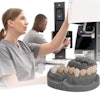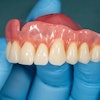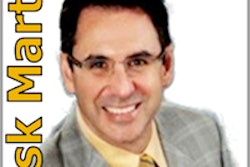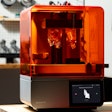
Q: There has been a lot of discussion regarding open, closed, and selectively open architecture in respect to dental chairside and lab CAD/CAM systems. What does each mean, and is one better than another?
A: A closed architecture CAD/CAM system does not integrate with any components manufactured by another company. These systems are fully proprietary and are closed to any additions or outside services. Closed systems have very limited flexibility, and end users typically have a limited product and material selection available.
This does not mean that a closed architecture system does not have any benefits. Depending on the manufacturer, quality standards can be more adhered to with closed architectures. And integration and interface are never compromised by third-party components.
An open architecture CAD/CAM system integrates with components manufactured by many outside vendors. This can work well when an existing industry standard is in place. For example, Sirona Dental System's inLab inEos Blue scanner exports .STL files, which is a standard 3D data interface.
If a company only makes a digital scanner, it will need to integrate with other technology vendors to remain relevant in the marketplace. Limited product offerings force it to rely upon third-party components to complete the system.
Keep in mind that, in the absence of industry standards, a multiple-vendor component system is not guaranteed to integrate seamlessly or perform optimally. There may also be the complexity and inconvenience of multiple-source installation, service, warranties, and training.
Another reason a CAD/CAM technology vendor may choose to be open is if it has miniscule market share and needs to fast-track market penetration with the help of more established partners.
In both cases, the business model is desired by vendors who have everything to gain and little to lose.
A selectively open architecture CAD/CAM system enables integration only with components manufactured by the most reputable dental industry vendors, which must meet the strictest criteria. The underlying philosophy for selectively open architecture is that quality is far better than quantity when forging technology partnership agreements.
Examples of applying selectively open architecture are Sirona's Cerec and inLab CAD/CAM systems and 3M ESPE's Lava systems. Their policy is to make the technology compatible with third-party components on a case-by-case basis, contingent on very strict third-party partner criteria, such as product quality, service record, market share, and financial stability.
A selectively open architecture allows flexibility in material and component choice, while ensuring quality interface of all approved partner products. Users of selectively open architecture CAD/CAM systems have the comfort of knowing that they themselves are not responsible for seamless integration and optimal performance of the final restoration.
Martin Jablow, D.M.D., is a practicing dentist and a self-professed technophile who lectures and blogs on a variety of technologies used in dentistry (dentechblog.blogspot.com). If you have a technology question for Dr. Jablow, e-mail it to us at [email protected].
The comments and observations expressed herein do not necessarily reflect the opinions of DrBicuspid.com, nor should they be construed as an endorsement or admonishment of any particular idea, vendor, or organization.
Copyright © 2010 DrBicuspid.com


















